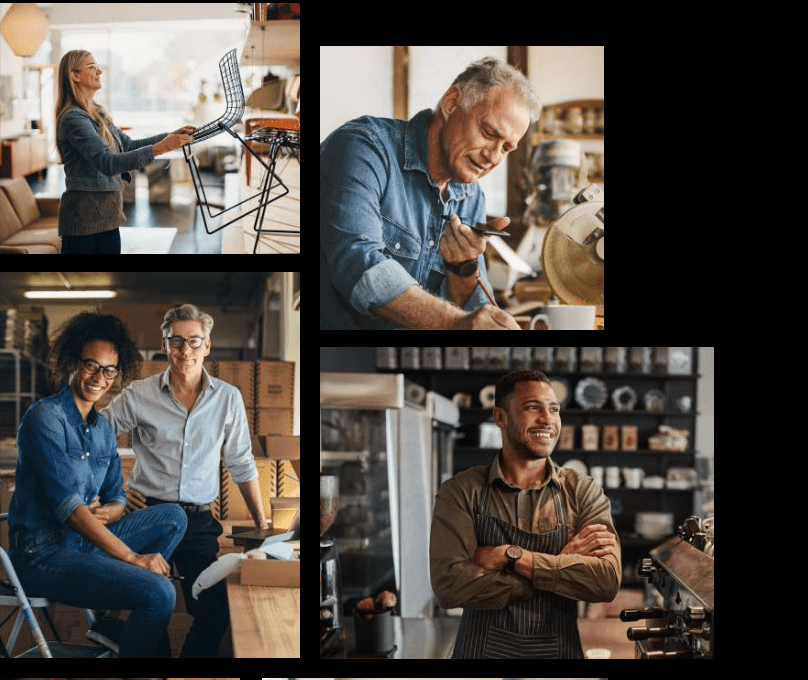2022 State of Local Business
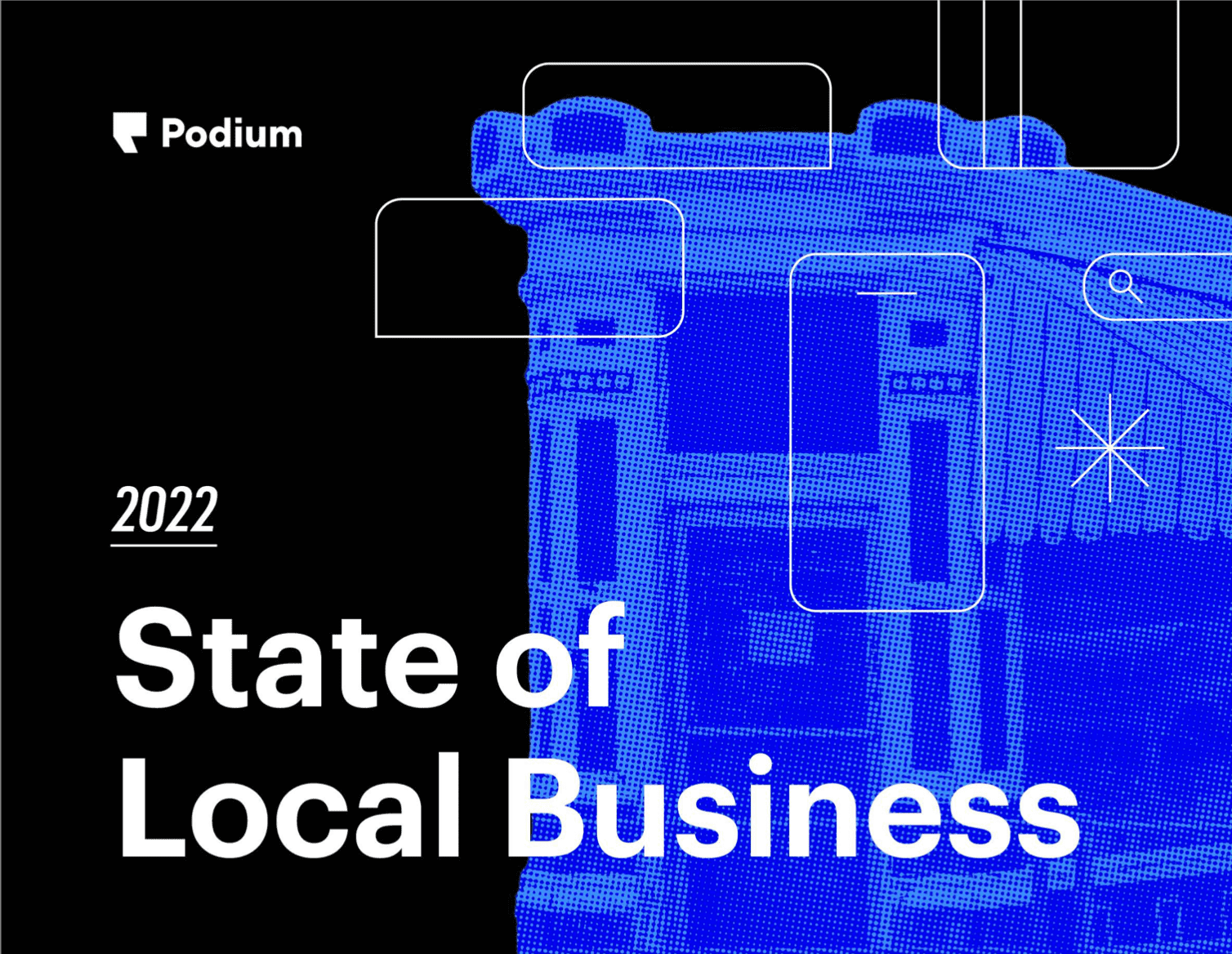
What have we learned? What has stuck, and what is going to determine your success in 2022? We surveyed 1,304 consumers and 923 business respondents across the US, Canada, and Australia to help you understand what you can expect from your customers in coming months and years, how to increase your operational efficiency, and how to retain your employees in the midst of a turbulent marketplace.
These surveys were conducted using Survey Monkey Audience between 9/23/2021-9/26-2021 and a database of self-identified local business owners, managers, and employees between 9/10/21-9/28/21. Survey takers included 1304 consumers and 923 local business respondents across the US, Canada, and Australia. For more on methodology, see page 27.
Key Insights
01 In 2022, efficiency will be the name of the game.
With the continued unpredictability of labor and materials and a notable uptick in demand, many businesses are focusing on working smarter to capitalize on what they have. Optimizing your operations to handle such changes now will become make-or-break in meeting consumer needs in the future.
02 Businesses are investing in tech to assist their employees.
With staffing and hiring top of mind this year and into next, many businesses are investing in technology to make their employees’ lifts lighter. 75% report purchasing technology in the past 12 months to help their teams work more efficiently.
03 Increased convenience = repeat business and referrals.
According to the data, today’s consumers look for ease of doing business second only to price as a key differentiator of local businesses. This preference increases when it comes to repeat business and referrals.
04 Businesses need to cater to a changed customer.
It’s true that customers still want pandemic-friendly services. However, customers also expect more convenience—more digital and mobile communication options and contact-free transactions and payments.
05 Consumers actively seek out local business.
9 out of 10 consumers go out of their way to do business locally. While local businesses should aim for Amazon-level convenience, they should lean into what their customers prize them for—being local.
From unprecedented to unpredictable to unstoppable.
2020 was unprecedented. Almost 85% of respondents flocked to businesses offering pandemic-friendly services including curbside pickup, local delivery, and/ or contactless payments. Nearly 60% said pandemic- friendly services led them to patronize a business for the first time. And 53.3% said that a local business’s failure to offer such services led them to either seek out or purchase from a competitor, or discontinue their patronage altogether.
While 2021 has been unpredictable, many businesses have adapted quickly, leading not only to recovery but thriving.
According to local business respondents, there is real optimism about the year ahead.
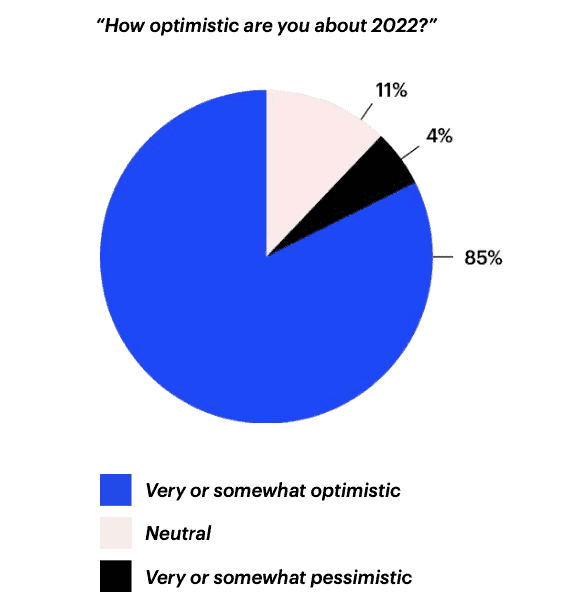
Increased demand: 2021’s silver lining.
This year, labor and inventory have been top pains. Changing customer expectations have also rounded out top challenges for 2021 as COVID protocols have continued to create uncertainty and inconvenience.
However, there’s a potential silver lining. Many businesses report a marked increase in demand, even if this demand is difficult to meet with fewer employees and supply chain challenges.
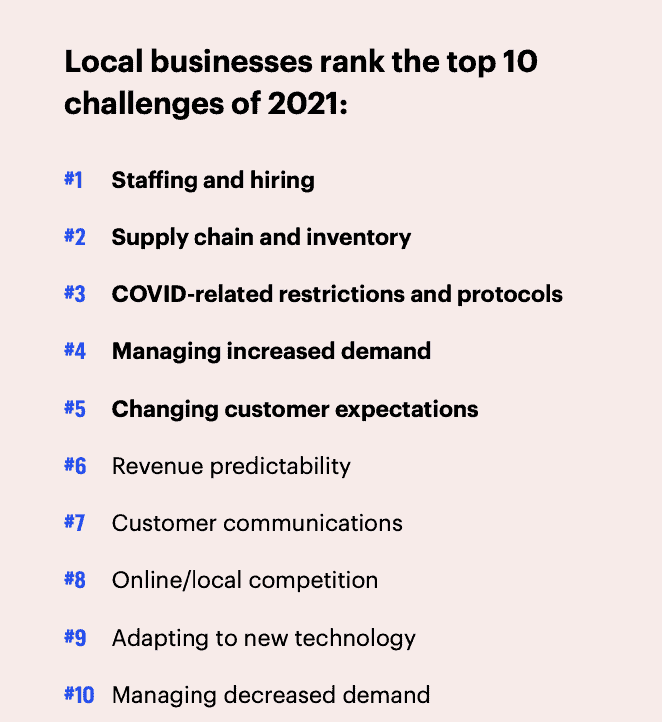
What wins in 2022? Reputation and customer experience.
In 2021, businesses still compete on reputation. But reputation only gets customers in the door—what keeps them coming back? Experience. And consumers say that when it comes to experience, they look for ease of doing business second only to price.
This preference for convenience is especially apparent when it comes to repeat business and referrals. Once consumers know it’s easy to do business with you, they’re hooked.

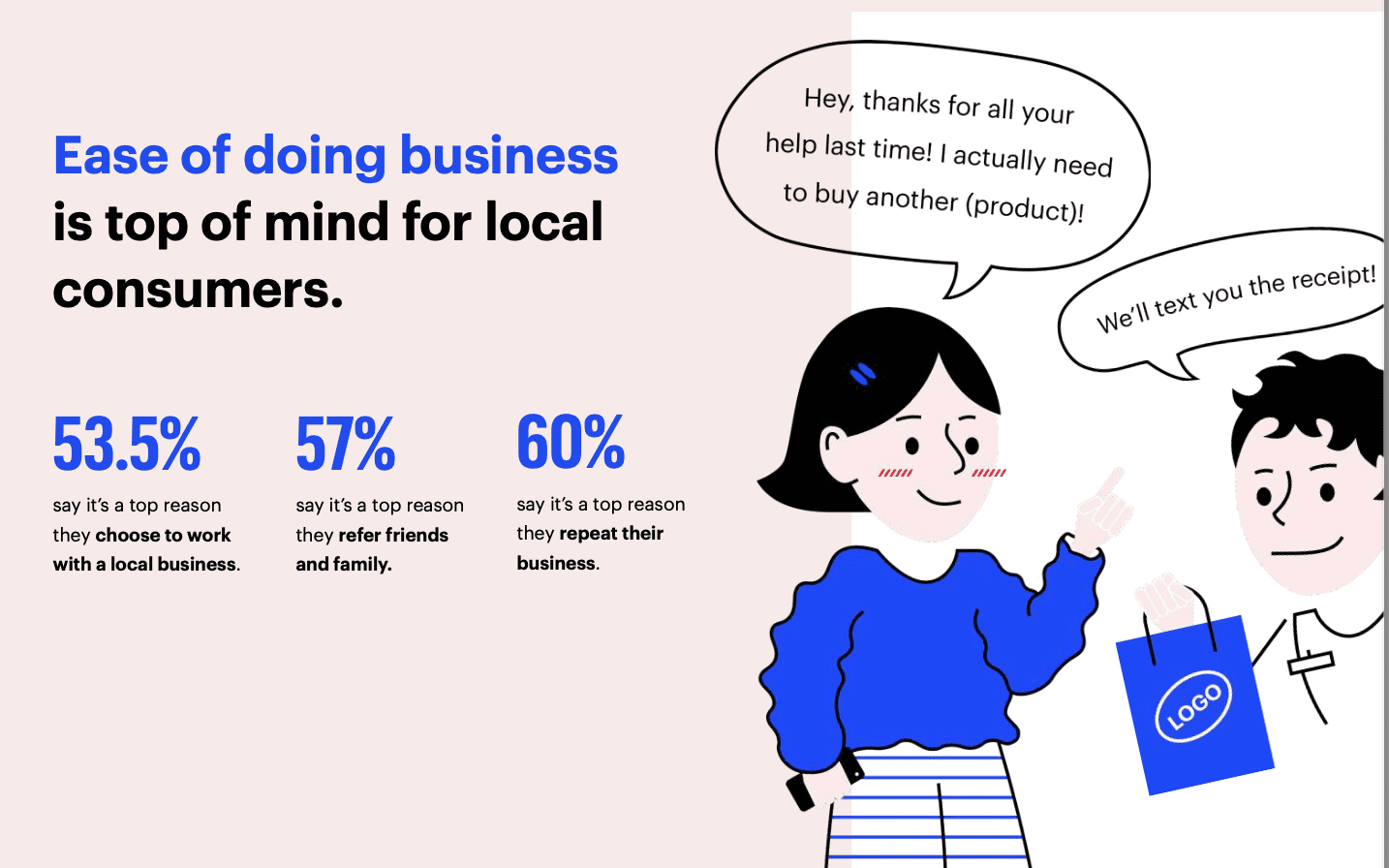
Such key changes in priority have been exacerbated by the pandemic—and both businesses and consumers have noticed. But the degree might depend a little on who you ask.
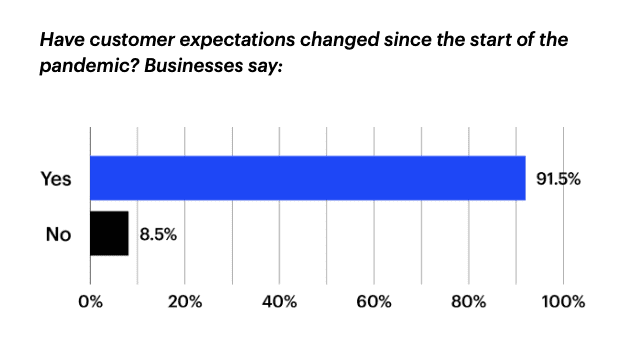
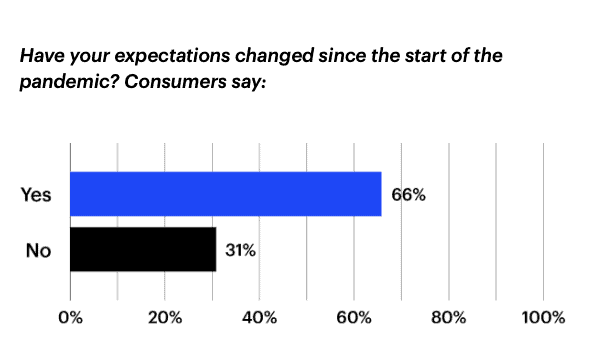
According to our research, consumers are actively looking for businesses that text, buying online more than before, seeking out contact-free interactions, and heavily favoring digital inquiries over visiting physical locations or even picking up the phone.
72% of consumers report spending more money on online purchases in the past 12 months.
46% of consumers actively seek out businesses that provide alternatives to speaking on the phone, such as text and chat.
43% of consumers actively seek out businesses that minimize personal contact.

However, it’s important to keep in mind that ease of doing business can be a double edged sword. The standard—and point of comparison—for most consumers has been set by apps and businesses like Uber and Amazon. In order to meet consumer expectations, local businesses need to aim for this level of convenience without losing local presence and feel.
Consumers and businesses agree convenience is here to stay.
Businesses have moved quickly over the past 18 months to adapt to temporary and permanent changes to customer expectations and an enhanced desire for convenience.
While social distancing may be temporary, local businesses say more digital and mobile communications are here to stay. Consumers agree, and also love the addition of contact-free transactions and expanded pick-up and delivery options.
Consumers’ top desires can be met with investment in digital capability.
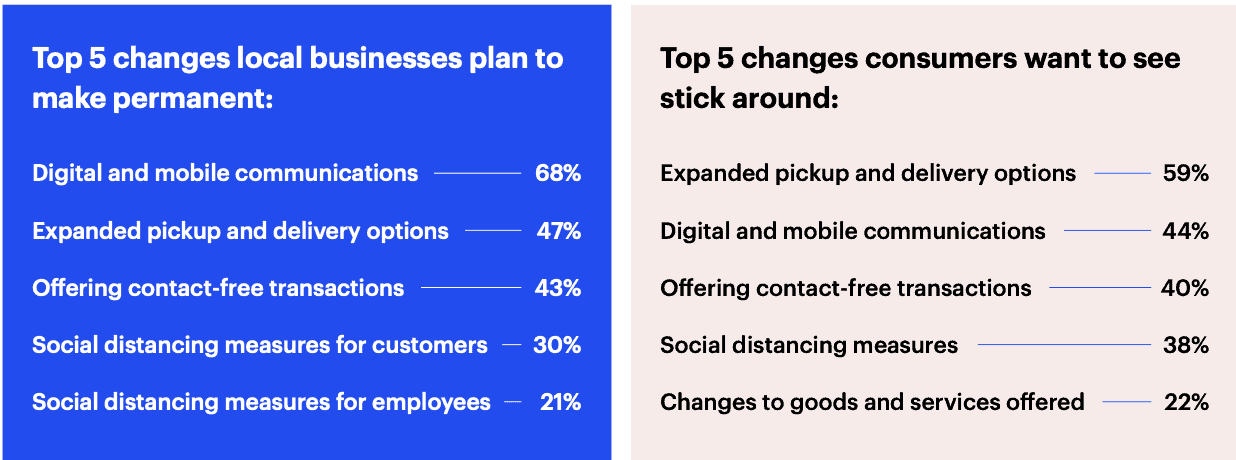
Invest digitally to keep great employees happy.
With staffing and hiring top of mind this year and into next, efficiency has become key. Methods to prevent employee burnout and increase retention are major priorities across the board as employee value rises.
After all, local businesses owners, managers, and teammates believe that they have high-quality, trusted teams.
In the face of labor shortages, avoiding burnout has become a matter of helping employees work smarter, not harder.
Local businesses need to optimize through digital means if they want to meet high demand and changed consumer expectations while keeping staff happy.
Among local business respondents with line of sight into investments, nearly 75% report purchasing technology in the past 12 months to help their teams work more efficiently.
And this data isn’t isolated. According to recent research by Twillio, 87% of businesses report that digital communications are critically or very important to their survival during the pandemic and will be critically or very important to their success going forward.
With all this digital investment, what technologies are businesses actually buying to improve efficiency? In order, the top five spend areas are: website chat, marketing automation solutions, phone systems, point of sale, and CRM. A long list of other areas of investment include accounting software and social media management solutions.
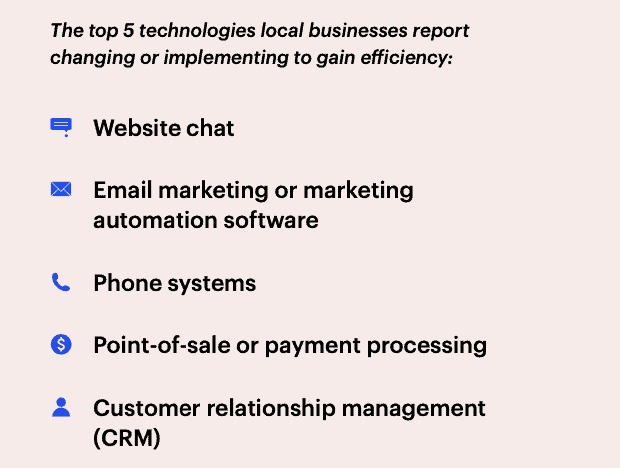
Q&A with Van Horn’s Tina Tasche
We sat down with Van Horn’s customer relations manager to learn how Van Horn has overcome 2021’s challenges and set themselves up for a successful 2022.
What was your biggest challenge as a local business in 2021?
Our biggest challenge this year has been the same echo heard all around the automotive industry – inventory shortages. The chip shortage and production shutdowns have made new vehicle inventory scarce. Our lots do not look the way that they did back in 2019.
What did you do to drive efficiency in the face of that challenge?
With no end in sight on the chip shortage, we shifted pretty quickly to a used inventory focus. If we can’t get new vehicle inventory from the OEM’s then we have to focus on what we have more control over and we have to maximize every opportunity. There’s a lot of great inventory in your own backyard and we’ve held specific buying events to keep a healthy level of used inventory.
What has changed about your customer’s expectations during the pandemic? What’s changed in a permanent way?
We’ve always been pretty technology focused, but the pandemic brought in a much higher level of demand to complete transactions contactless. Now that customers have experienced the contactless experience, they want to keep it. We’re doing a lot more texting, online vehicle sales, and even service vehicle pick/up drop offs.
A game changer for us in 2021 has been adding mobile payments. Now we can close out any experience with a secure payment method no matter where our customer is located.
What has you feeling optimistic about 2022?
In 2021, we’ve put a lot of focus on the overall customer experience. This includes making sure that we’re giving the same 5-star customer experience no matter which of our 16 locations a customer communicates with. We’ve added and trained our staff on multiple new technologies to make communications stronger and easier both internally and externally.
Going into 2022, we’re excited about taking everything we learned and implemented in 2021 into a full calendar year. We might not be able to control what inventory rolls off the transport truck, but we’re completely focused on the things we can control.
It’s been a challenging couple of years for a lot of communities. Coming out of the pandemic, do you think consumers’ feeling about local business has changed at all?
I think the pandemic taught us a lot about small business being the backbone of our communities. Businesses had to evolve and come up with creative ways to keep open and some of those evolutions are here to stay. Just look at how curbside pick-up became an expectation rather than just something nice to have.
In so many ways, local businesses have accepted the challenge of evolving and are just as big of champions of the changes as the consumers experiencing them.
Digital marketing is the future of local business.
According to our research, word of mouth—via friends or reviews—has unsurprisingly been and continues to be the most effective marketing tactic for local business.
However, the pandemic push to digital isn’t isolated to helping local employees do more with less. It also ensures that local customers, now even more accustomed to doing business online, can find and hear from local businesses.
New digital marketing methods have become key differentiators—especially when it comes to mastering local SEO. And a surprisingly effective entrant to the local business marketing arsenal? Text marketing.

Text marketing consistently outperforms some more dated digital channels like email and also boasts better results than local business mainstays such as direct mail, radio, and out-of-home ads, meeting a new, even more digital consumer where they are in 2021.

And local businesses are catching the vision. Among local business respondents with a line of sight into digital spending, 40% report spending more on their digital presence during the pandemic compared to what they were spending before. And it’s paying off.
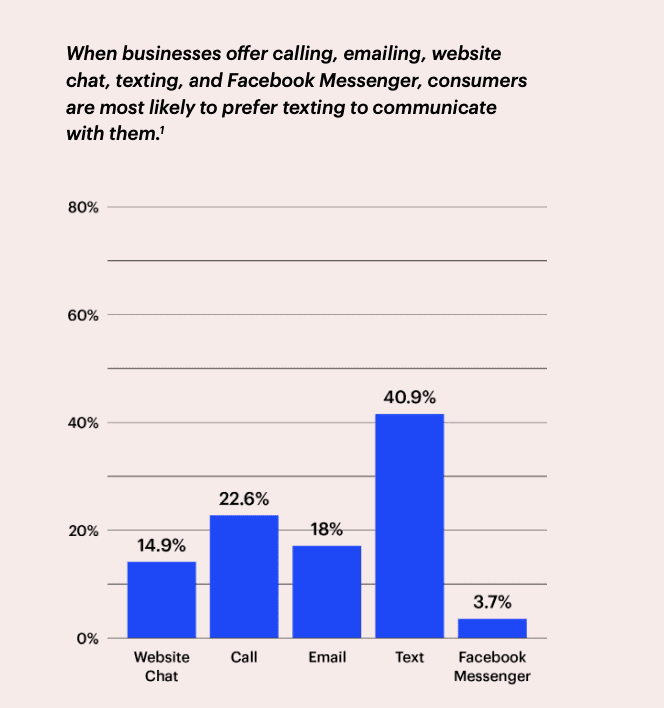
Pura Vida gets ready to win with text in 2022.
“Listen, if your agency isn’t making you $20,000 in two days on a basic text campaign, you need to look at Podium.”
—Julie Davis, President/CEO
Julie Davis started her medical spa in 2018 and weathered the COVID storm. But she didn’t just survive; she set her business up for success by investing in digital marketing and customer experience. And the results are already showing.
Julie knew that people were on their phones and that texting was typically the most comfortable way for people to communicate about intimate procedures. Through text, Julie not only made communication simple but also created a safe space for her patients.
“Our patients love it. That’s where people are, they want to text. And I think in the med spa space, one unique thing worth highlighting would be how many times people are at work when they’re trying to make personal appointments, or they’re on a lunch break… they’re not in an environment where they want to say out loud, ‘Hey, I’m calling to make my dermal filler appointment.’ Because they don’t want others to know what they’re doing.”
“Podium was the perfect solution,” Julie said, “[patients are] actually going to engage with my staff—people who are intimate with what we do and can speak to anything. So we did that right out of the gate. It very quickly mushroomed into everybody’s preferred method.”
With her business operating as efficiently as ever, Julie shifted her focus toward Pura Vida’s marketing strategy. Julie turned to SMS marketing, knowing that texting outperformed traditional marketing methods, such as email.
Using Podium Campaigns for Pura Vida’s SMS marketing promotions proved to be a game-changer for her and the entire Pura Vida staff. And due to the natural opt-in touchpoints within Podium (Reviews, Webchat, and Payments), Julie already had a large list of opted-in subscribers, which has now grown to over 4,300 people.
In addition to simplifying internal operations, Campaigns also drove serious revenue. “By way of example, we ran a campaign for Botox treatments and sent a payment request once they expressed interest,” Julie shared. ”They were prepaying on their account to get the deal. From that campaign, I put $20,000 in the bank over two days. Why would [a business] not do that?”

Customers love local.
Reflecting on the pandemic, we as consumers appreciate the unprecedented and unpredictable times our favorite local businesses have endured. Seeing our barbers, dentists, mechanics, and the bike shop down the street close, reopen, and deal with new challenges has made many consumers more appreciative and more aware of their day-to-day interactions with local businesses.
The fact has and will continue to remain: doing business locally is an integral part of everyday life.
7 in 10 consumers frequent a local business once a week or more.
And consumers love local businesses more than ever. In terms of perception of the businesses in their community, they give their local businesses 4 out of 5 stars.
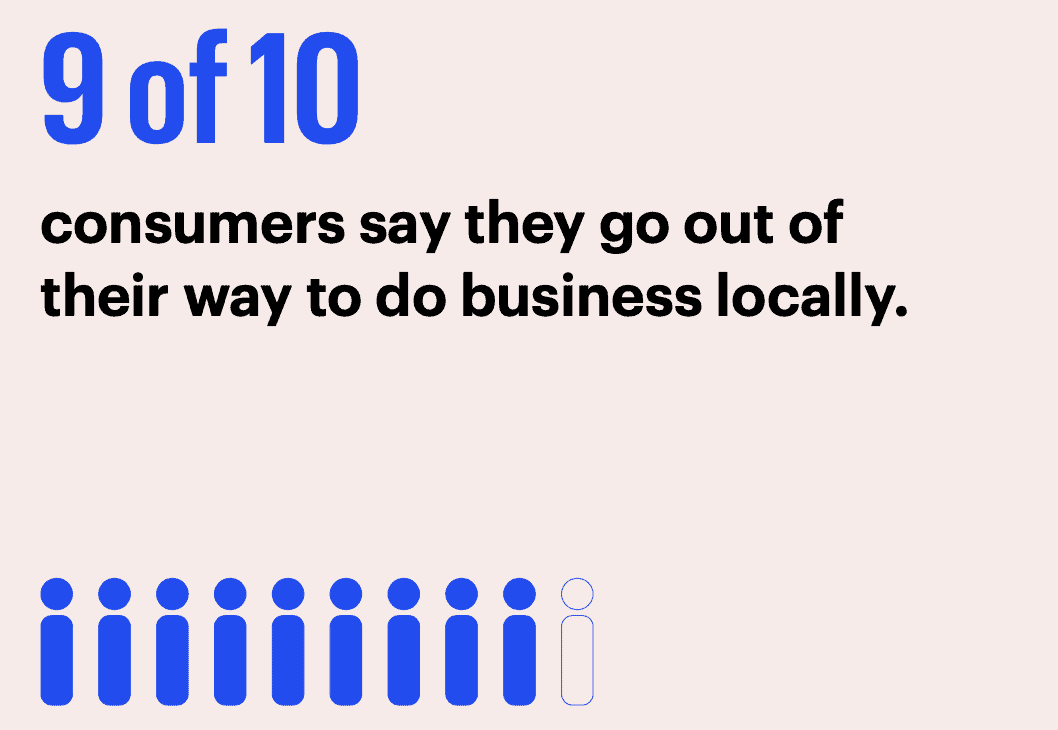
Consumers also prefer local businesses in their inboxes over major chain and ecommerce players. They report being 21% more likely to opt-in to local business’s SMS marketing lists than major chain or big box businesses and 45% more likely than online or ecommerce businesses.
And even as experience tilts toward convenience, our research shows that consumers go out of their way to patronize local businesses.
Consumers also appreciate the place local businesses have in their community—with their spending habits. 3 in 4 consumers say they’re more likely to spend money at a local business if the business shows support of community issues and/or charitable causes.
68% of local business respondents say their business actively supports local charities or causes.

The advantage of local business is being local.
The businesses who are setting up for success have figured it out. To see success in 2022, businesses have to focus on achieving big name convenience while leaning into what makes them local. This means they have to digitally invest and increase efficiency to prioritize their people—both their customers and their employees.
Doing so will lead to quick rewards. But more importantly, it will set them up for consistent stability, growth, and opportunity in the future.
